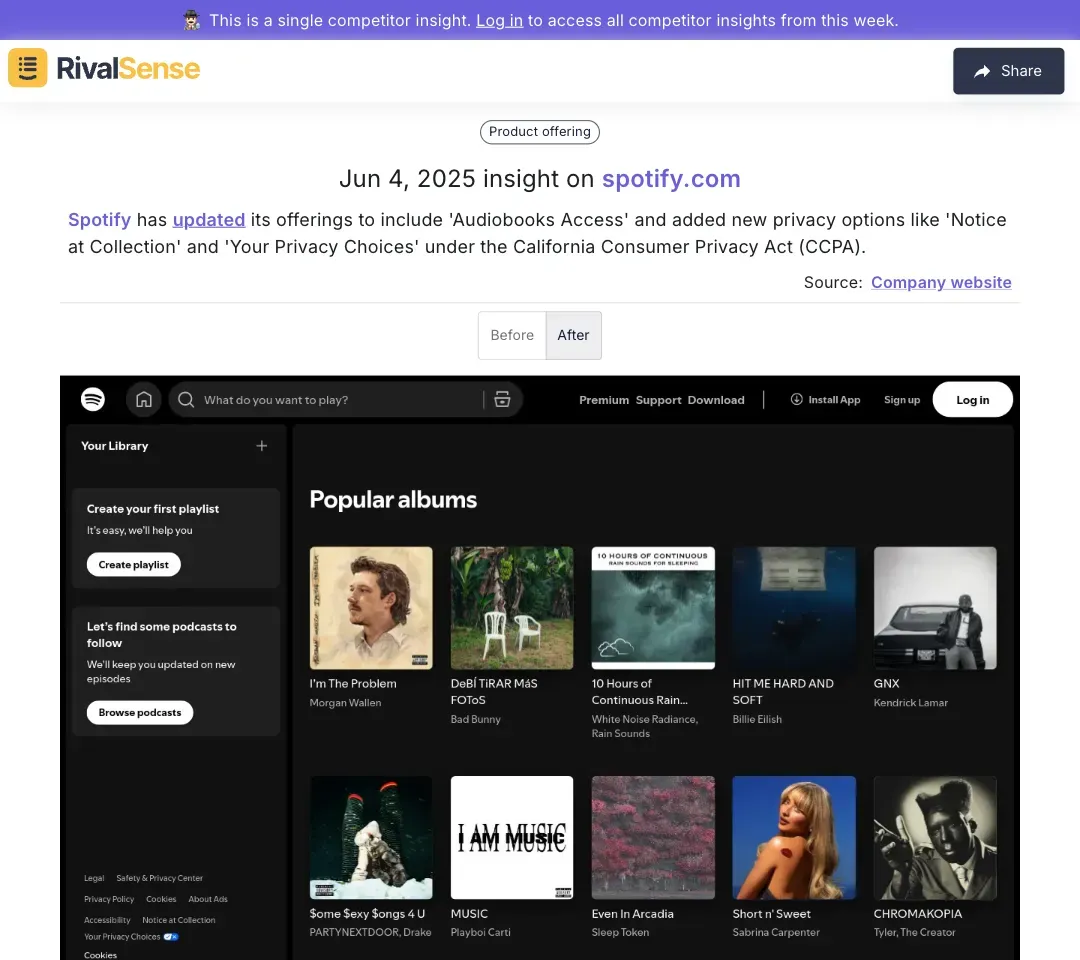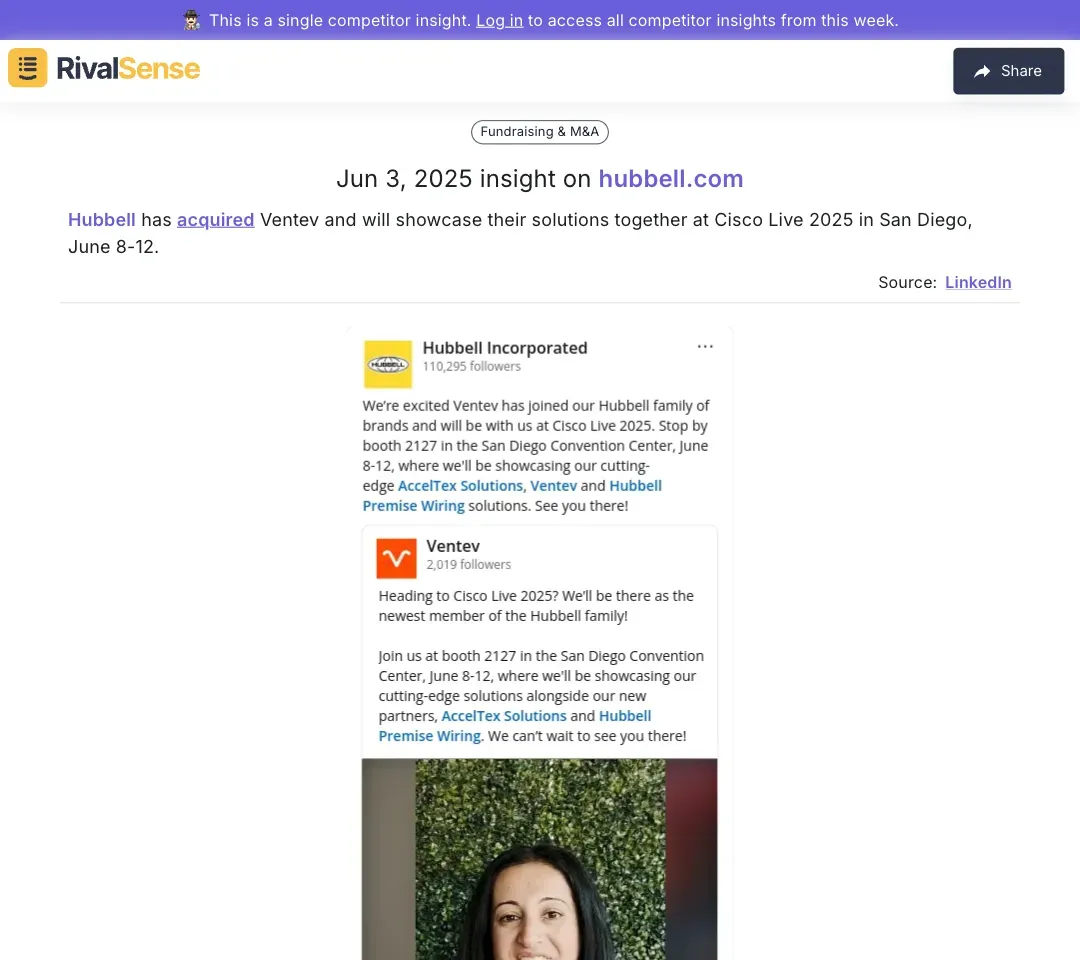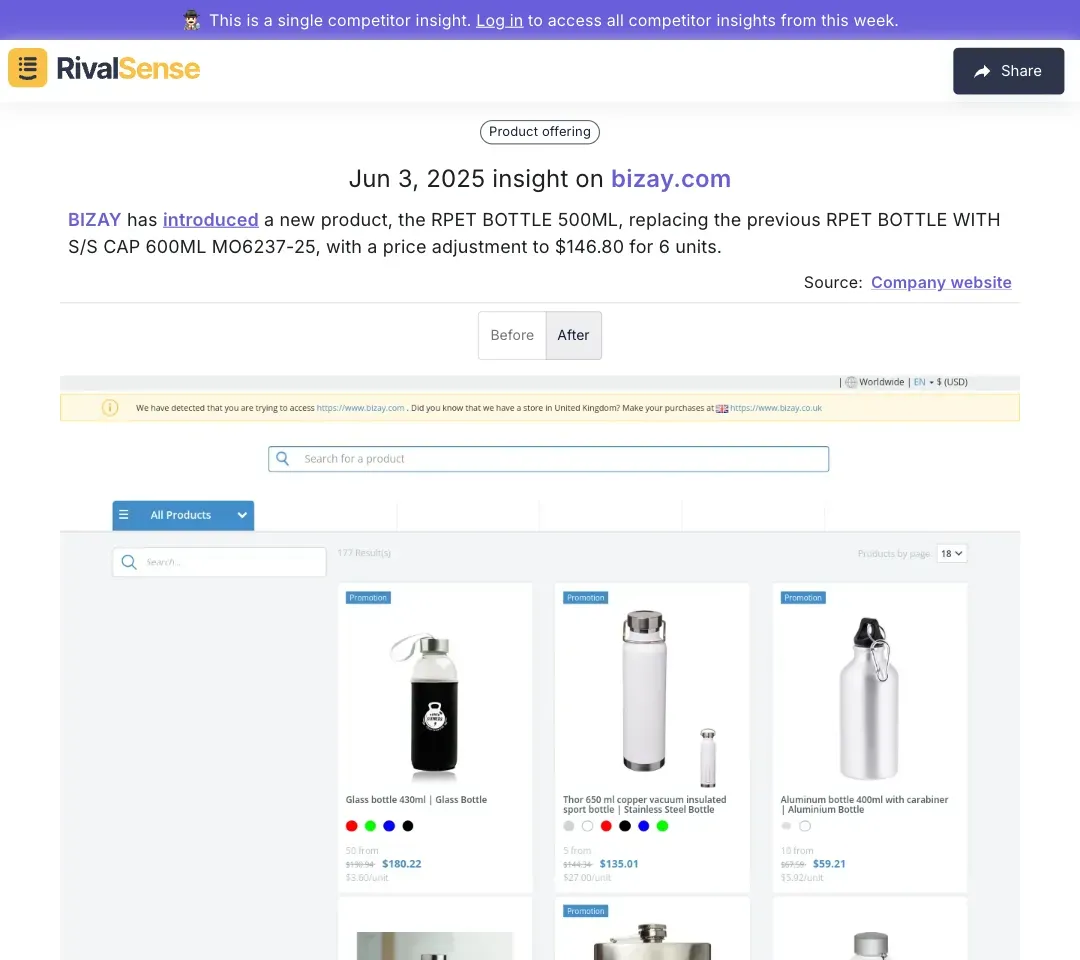How to Track Competitor Design Changes: A Strategic Guide for Business Leaders
In today's rapidly evolving market landscape, competitor design changes often signal strategic pivots before official announcements. For founders and CEOs, spotting these visual cues early provides invaluable time to adjust positioning and innovation roadmaps. This guide delivers actionable methods to monitor these changes systematically.
Why Design Changes Reveal Strategic Shifts
Visual transformations are never accidental—they reflect calculated business decisions. A website redesign might precede market expansion, while packaging updates could indicate sustainability initiatives. By decoding these changes, you gain foresight into competitors' priorities and resource allocation. Early detection allows proactive strategy refinement before market dynamics shift.
Practical Methods for Tracking Design Updates
Implementing a structured monitoring approach prevents critical changes from slipping through. Below are proven techniques combining manual and automated solutions:
-
Scheduled Website Audits
Dedicate weekly time to review competitors' key pages like homepages, product sections, and pricing. Note layout shifts, color scheme updates, or new visual elements. While thorough, this becomes time-intensive at scale. -
Historical Comparisons via Wayback Machine
The Internet Archive captures website snapshots over time. Compare monthly versions side-by-side to spot subtle design evolutions that might escape real-time observation. -
Visual Regression Tracking
Use tools like PagePeeker or Visualping to capture automatic screenshots at set intervals. Configure alerts for specific page sections to receive change notifications. -
Social Media Design Analysis
Monitor competitors' LinkedIn, Instagram, and X profiles for updated banners, post templates, or video styles. Design overhauls often debut here before full implementation.
| Method | Effort Level | Best For |
|----------------------|--------------|-------------------|
| Manual Website Checks| High | Deep-page analysis|
| Wayback Machine | Medium | Historical trends |
| Screenshot Alerts | Low | Critical changes |
| Social Media Scans | Medium | Early signals |
Real-World Examples: Strategic Insights from Design Changes
Beyond aesthetics, design updates often accompany major business developments. These RivalSense discoveries demonstrate how visual shifts reveal strategic moves:
-
Spotify’s Interface & Compliance Updates

When Spotify added 'Audiobooks Access' and CCPA privacy options, the interface redesign signaled content diversification and regulatory adaptation. Strategic value: Identifies expansion into adjacent markets and compliance priorities affecting user experience. -
Hubbell’s Brand Integration Post-Acquisition

After acquiring Ventev, Hubbell updated branding to showcase unified solutions before Cisco Live 2025. Strategic value: Reveals M&A integration speed and event-driven marketing tactics for partnership evaluation. -
BIZAY’s Packaging & Pricing Revamp

BIZAY replaced RPET bottle designs while adjusting prices, indicating product line optimization. Strategic value: Highlights material cost changes and sustainability positioning affecting pricing strategy.
Optimization Checklist for Design Tracking
Maximize effectiveness with these tactical approaches:
- [ ] Focus on 3-5 primary competitors with direct market overlap
- [ ] Document baseline designs before monitoring for clear comparison
- [ ] Analyze color psychology and typography changes for audience targeting clues
- [ ] Cross-reference design updates with pricing/feature announcements
- [ ] Assign team members specific tracking responsibilities
Automating Competitive Design Intelligence
Manual tracking consumes valuable leadership bandwidth. RivalSense solves this by continuously scanning 80+ sources—including websites, app stores, and registries—for visual and textual changes. Its AI-driven system detects subtle design iterations others miss, delivering consolidated insights via weekly reports:
"We caught a competitor's checkout page redesign two weeks before launch through RivalSense, allowing our UX team to counter-test new flows." — B2B SaaS Founder
Key Strategic Benefits
Consistent design monitoring delivers three critical advantages:
- Anticipate market shifts when rebrands precede product launches
- Benchmark UX improvements against industry visual trends
- Identify cost-saving opportunities from packaging/material changes
Final Recommendation
While manual methods provide baseline awareness, comprehensive tracking requires specialized tools. RivalSense transforms scattered observations into actionable intelligence, covering design updates plus pricing shifts, partnerships, and regulatory changes in one dashboard.
Ready to decode competitor visual strategies?
→ Get your first competitor report today with RivalSense's free trial. No credit card required.
📚 Read more
👉 Boost CTO Productivity in Medical Aesthetics with Competitive Intelligence
👉 How CodeAcademy's Credit Cut in Digital Marketing Fueled Competitors' Strategies
👉 Instagram Insights: B2B Market Share & Competitor Analysis
👉 Boost Productivity in Fraud Prevention with Competitor Tracking
👉 Decoding Competitor Event Moves: Boost Your Segmentation Strategy
